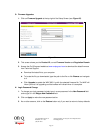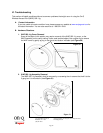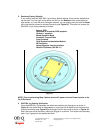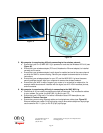
Page 28
301 Fulling Mill Road, Suite G ©Copyright 2005 by On-Q/Legrand, Inc All Rights Reserved.
Middletown, PA 17057 www.onqlegrand.com
(800)-321-2343
H
Hexadecimal
A base-sixteen numbering system that uses sixteen sequential numbers (0 to 9 and the letters A to F) as
base units before adding a new position. On computers, hexadecimal is a convenient way to express
binary numbers.
Host
In IP, a host is any computer supporting end-user applications or services with full two-way network
access. Each host has a unique host number that combined with the network number forms its IP
address. Host also can mean: A computer running a web server that serves pages for one or more web
sites belonging to organization(s) or individuals; A company that provides this service; or In IBM
environments, a mainframe computer
I
ICMP
Internet Control Message Protocol is a protocol used for error, problem, and informational messages sent
between IP hosts and gateways. ICMP messages are processed by the IP software and are not usually
apparent to the end-user.
IEEE
The Institute of Electrical and Electronics Engineers, Inc. (http://www.ieee.org) is an organization that
produces standards, technical papers, and symposiums for the electrical and electronic industries and is
accredited by ANSI. 802.11b and 802.11g are examples of standards they have produced.
Internet
A worldwide collection of interconnected networks using TCP/IP.
IP
Internet Protocol is a set of standards that enable different types of computers to communicate with one
another and exchange data through the Internet. IP provides the appearance of a single, seamless
communication system and makes the Internet a virtual network.
IP Address
A unique 32-bit value that identifies each host on a TCP/IP network. TCP/IP networks route messages
based on the destination IP address. For a Class C network, the first 24 bits are the network address and
the final 8 bits are the host address; in dotted-decimal format it appears .network.network.network.host.
ISDN
Integrated Services Digital Network
ISP
Internet Service Provider
L
LAN
Local Area Network. A local area network provides a full-time, high-bandwidth connection over a limited
area such as a home, building, or campus. Ethernet is the most widely used LAN standard.


















